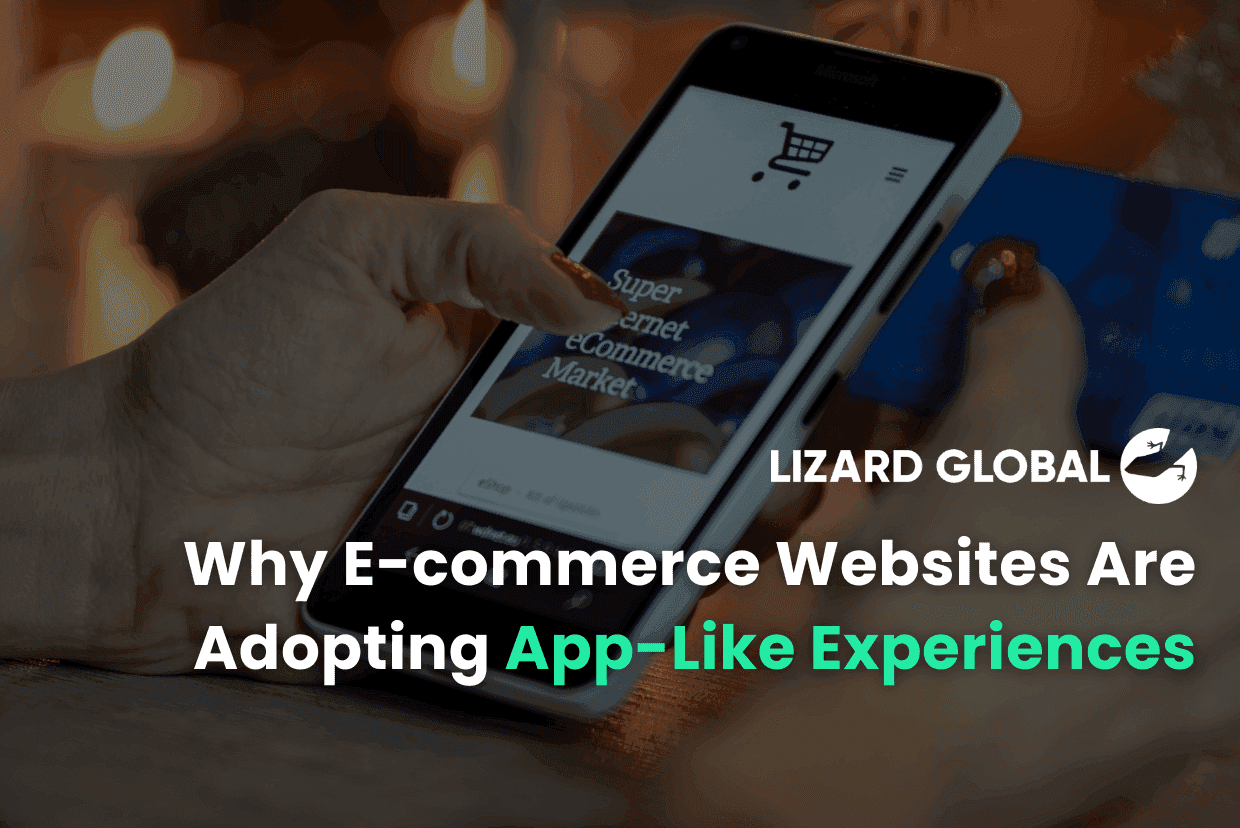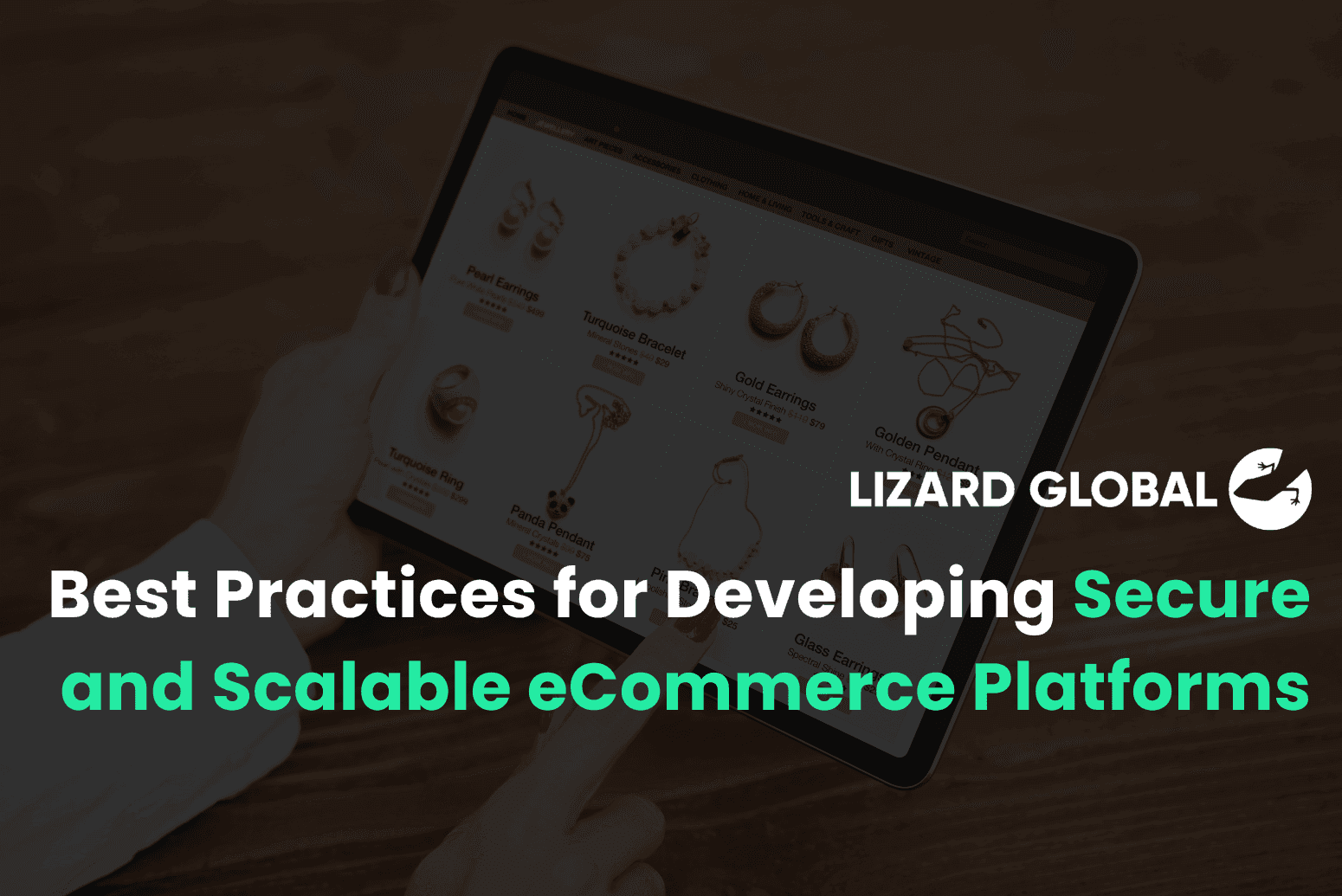Mobile App Development
App Design Principles
+ 3 more ...
How To Create A Platform That People Love Using?

29 Aug 2024
by Nadiy, Senior Content Writer

29 Aug 2024
by Nadiy, Senior Content Writer
Mobile App Development
App Design Principles
Customer-centric Platform
App Personalization Features
Digital Experience Optimization
How To Create A Platform That People Love Using?
Table of contents
Contact us
We will get back to you in the next 48 hours.

How To Create A Platform That People Love Using
Creating a platform or app that users love requires a blend of intuitive design, emotional resonance, and continuous improvement. This blog explores the essential steps to build an app that stands out, the key factors that make it appealing, and how partnering with a software development company can turn your vision into a successful, user-loved product. Discover the secrets to crafting digital experiences that not only meet user needs but also exceed their expectations.
key takeaways
Creating a platform or app that people not only use but love is a challenging yet rewarding endeavor. As users are overloaded with countless apps and platforms competing for their attention, standing out requires more than just functionality—it requires an emotional connection with users, intuitive design, and a seamless user experience.
This blog delves into what makes a platform loved by its users, how to build one, the key elements of user appeal, and the role of a software development company in turning a concept into a captivating digital experience.
What is a Platform That People Love?
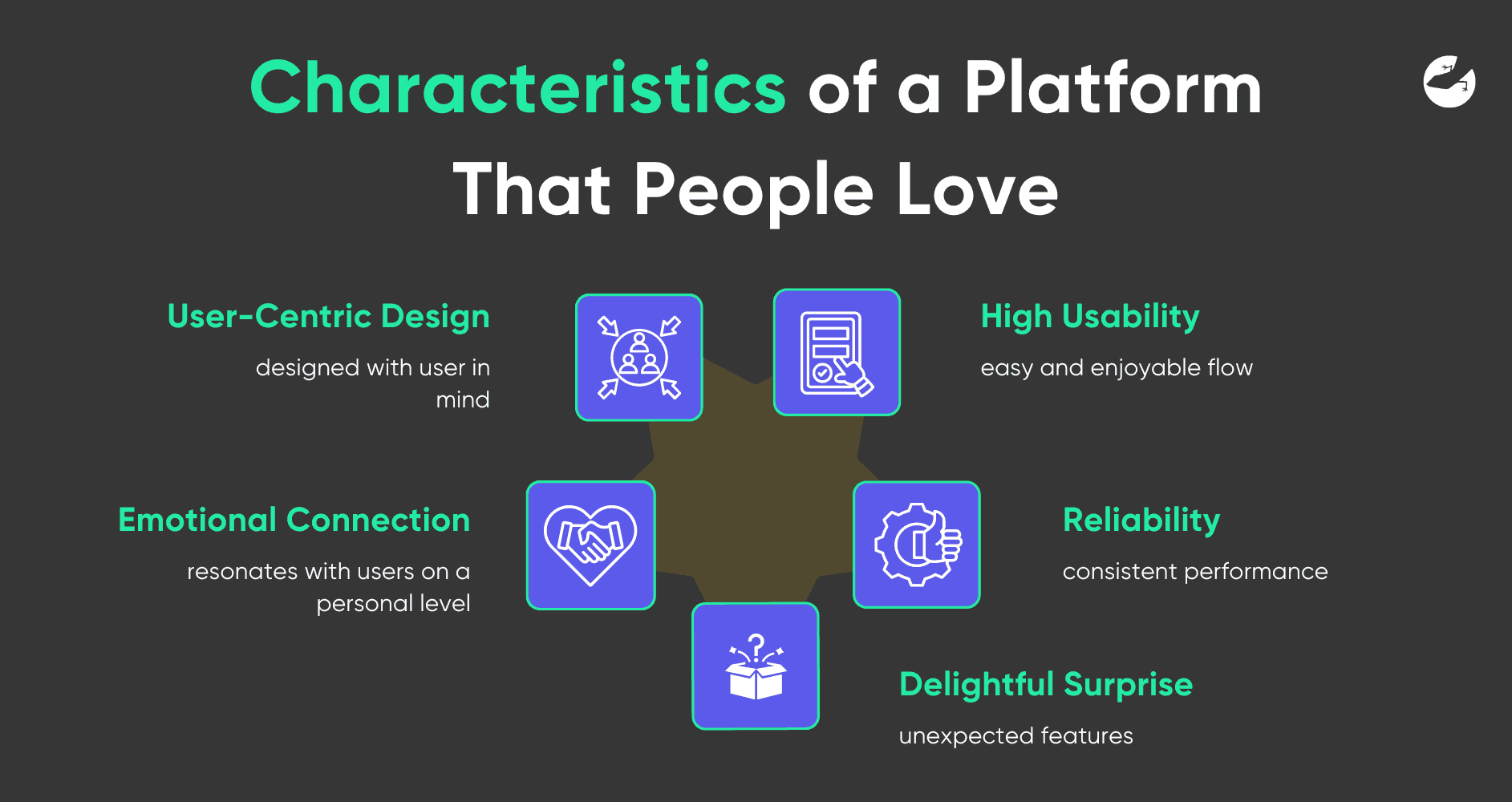
A platform or app that people love isn't just a tool—it's an experience. It’s something users turn to regularly, not because they have to, but because they want to. These are platforms and apps that users rave about, recommend to others, and remain loyal to over time. They are characterized by:
- User-Centric Design: Every aspect of the platform is designed with the user in mind, from ease of navigation to aesthetic appeal.
- Emotional Connection: The app or platform resonates with users on a personal level, making them feel understood and valued.
- High Usability: It’s intuitive, with a seamless flow that makes tasks easy and enjoyable.
- Reliability: Users can trust that the platform will perform consistently without glitches or downtime.
- Delightful Surprises: Small, unexpected features that enhance the user experience and bring joy.
How is it Done?
Creating a platform or app that users love involves a combination of strategic planning, user research, and iterative development. Here’s a step-by-step guide:
Understand Your Audience:

User Research: Begin by conducting thorough research to understand your target audience. What are their needs, pain points, and preferences? Surveys, interviews, and user personas can provide valuable insights.
Market Analysis: Analyze existing platforms and apps that cater to similar audiences. Identify what they do well and where they fall short.
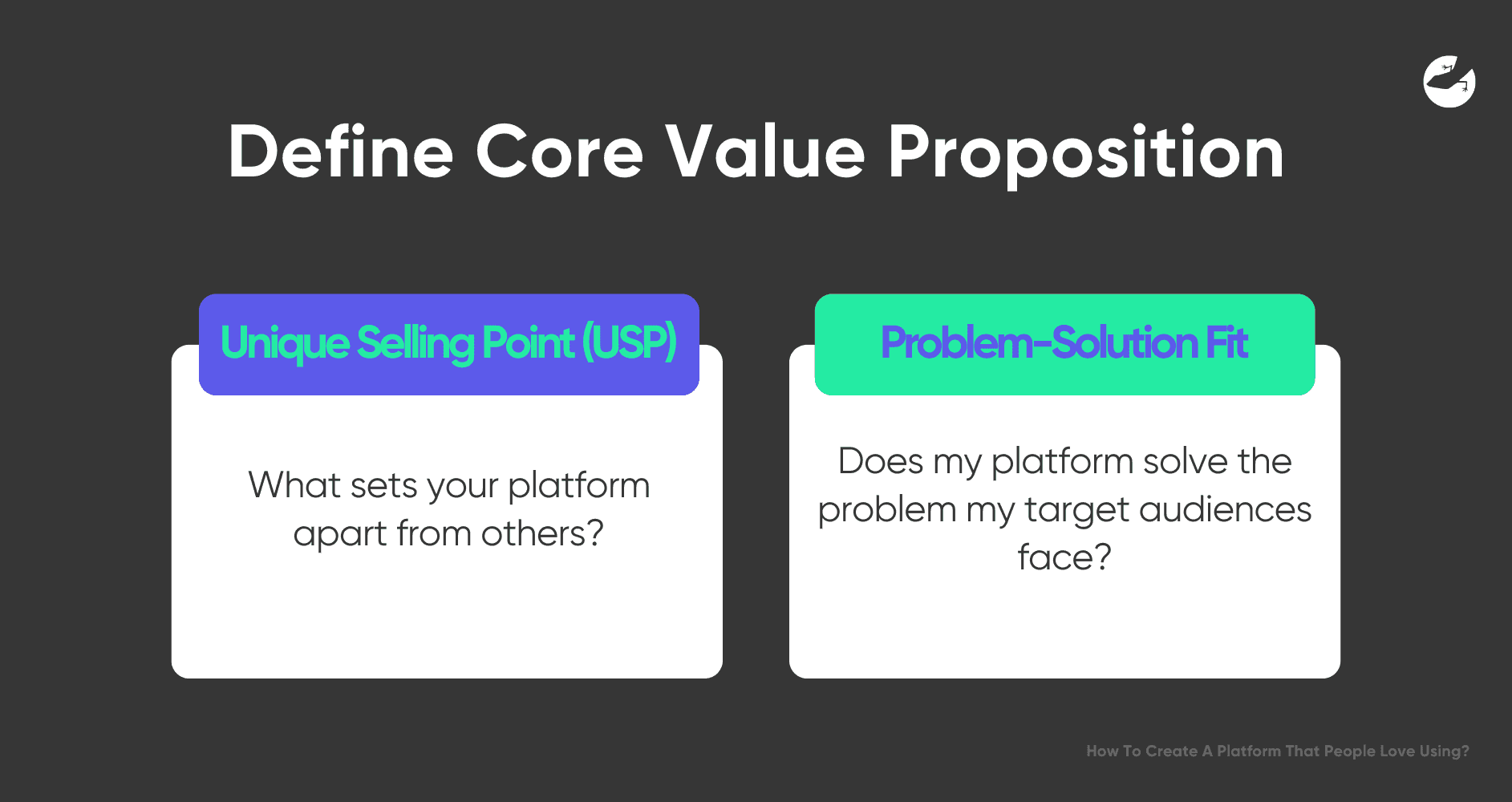
Define the Core Value Proposition:
Unique Selling Point (USP): Determine what sets your platform or app apart. What unique value does it offer that others don’t?
Problem-Solution Fit: Ensure your app or platform solves a specific problem for your users in a way that is better than the alternatives.
Design for the User Experience (UX):

User-Centric Design: Design with the user in mind. Prioritize ease of use, intuitive navigation, and accessibility.
Prototype and Test: Create wireframes and prototypes to test your design with real users. Iterate based on feedback to refine the user experience.
Focus on Aesthetics (UI):
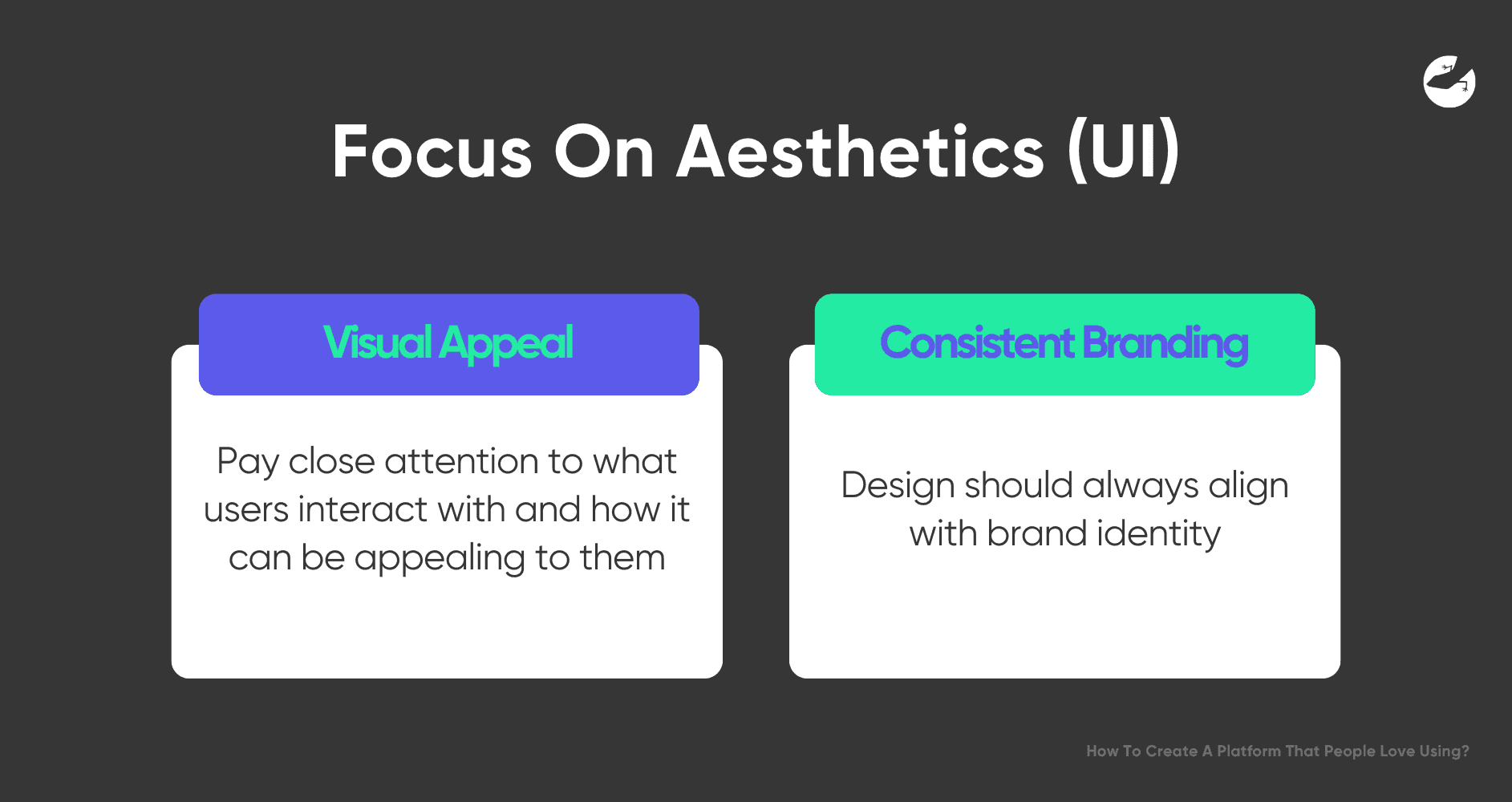
Visual Appeal: A visually appealing design can make a significant difference in user engagement. Consider typography, color schemes, and overall aesthetic coherence.
Consistent Branding: Ensure that the design aligns with your brand identity, creating a cohesive experience across all touchpoints.
Develop with Agility:
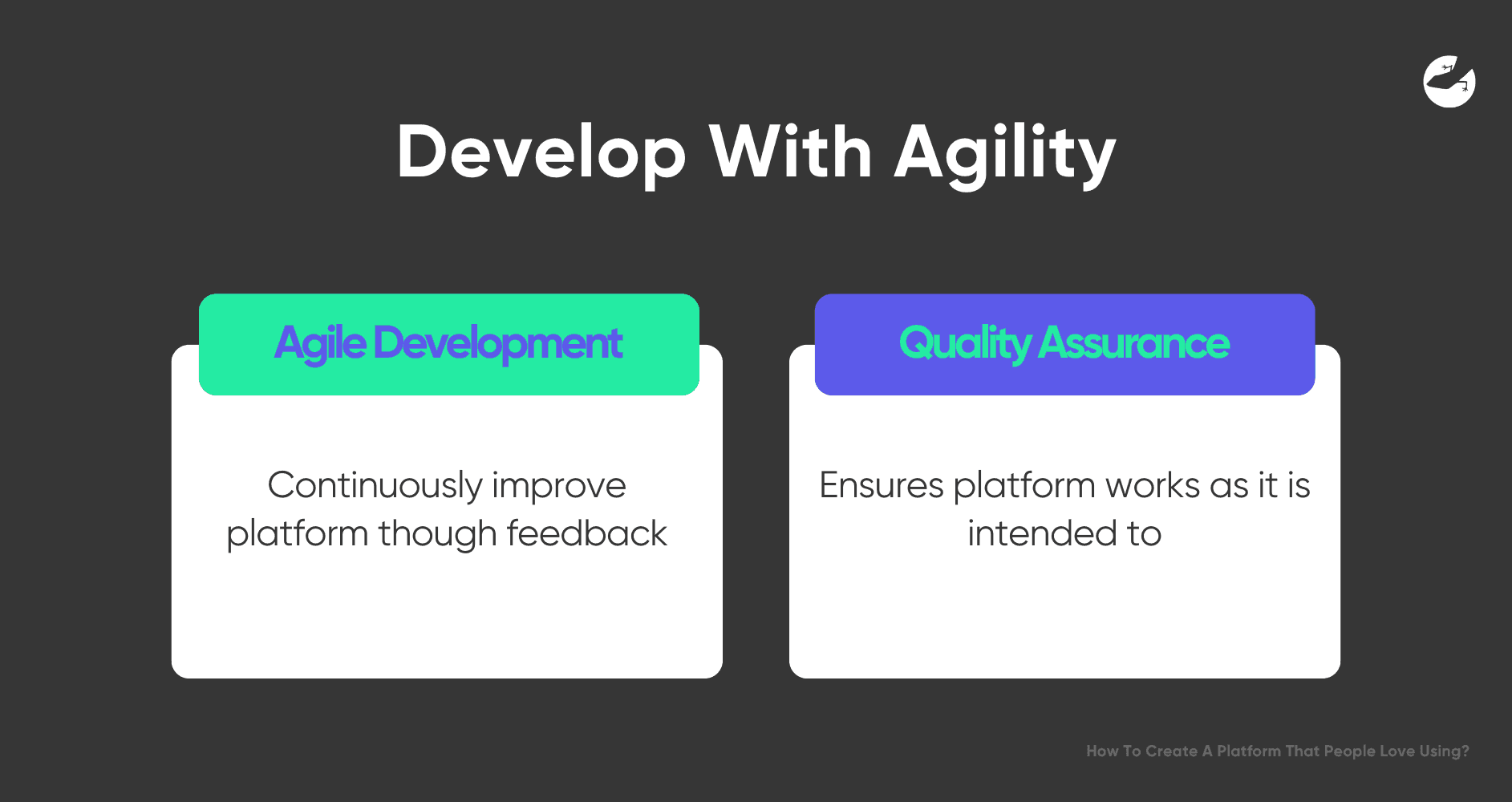
Agile Development: Use agile methodologies to develop the platform or app in increments. This allows for continuous feedback and improvements.
Quality Assurance: Rigorous testing is essential to ensure the platform is bug-free and performs well under various conditions.
Build an Engaged Community:
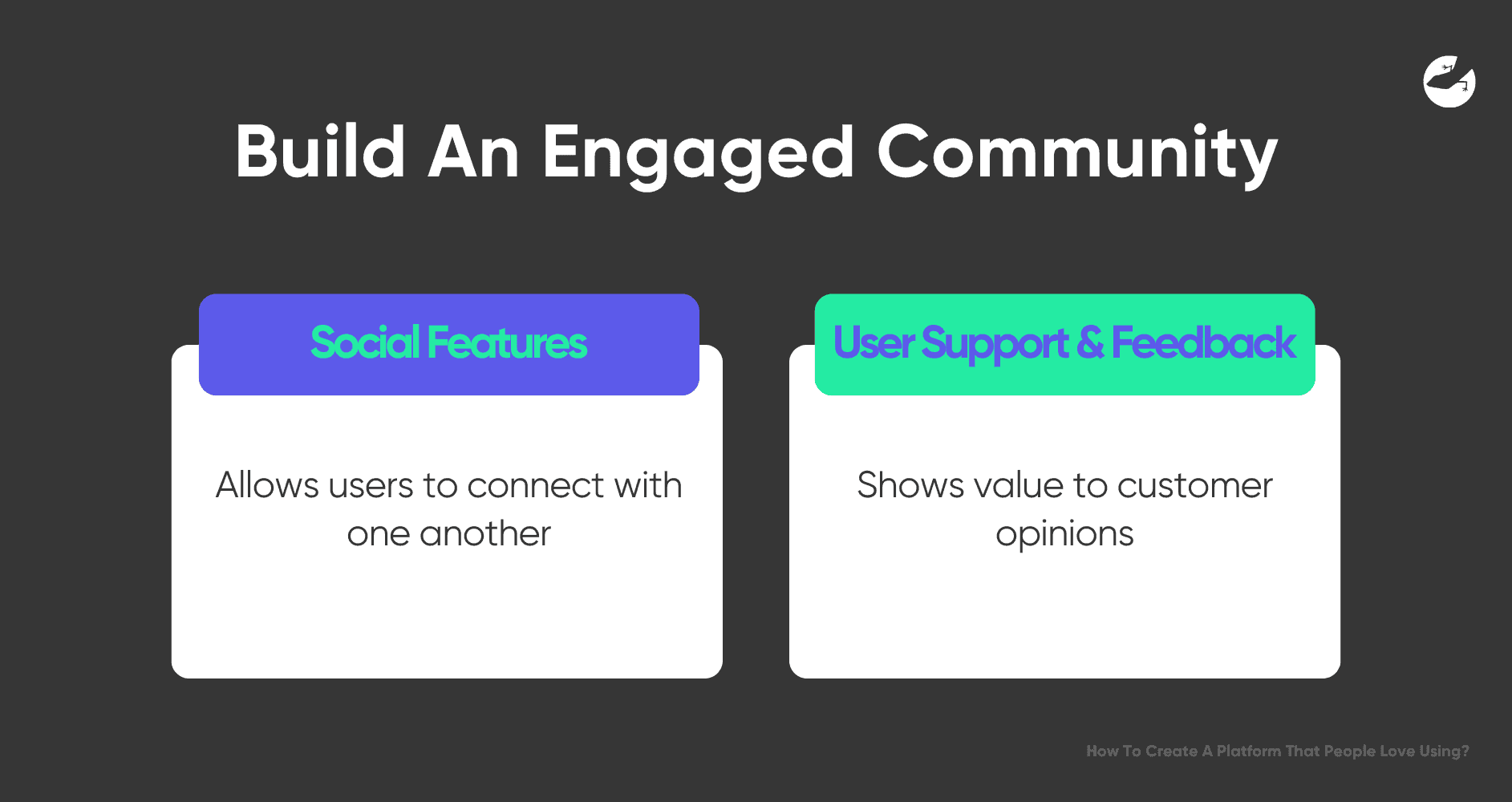
Social Features: Incorporate social features that allow users to connect with each other, share content, or compete in a fun way.
User Support and Feedback: Offer excellent customer support and actively seek feedback. Show users that their opinions matter by implementing changes based on their suggestions.
Iterate and Improve:
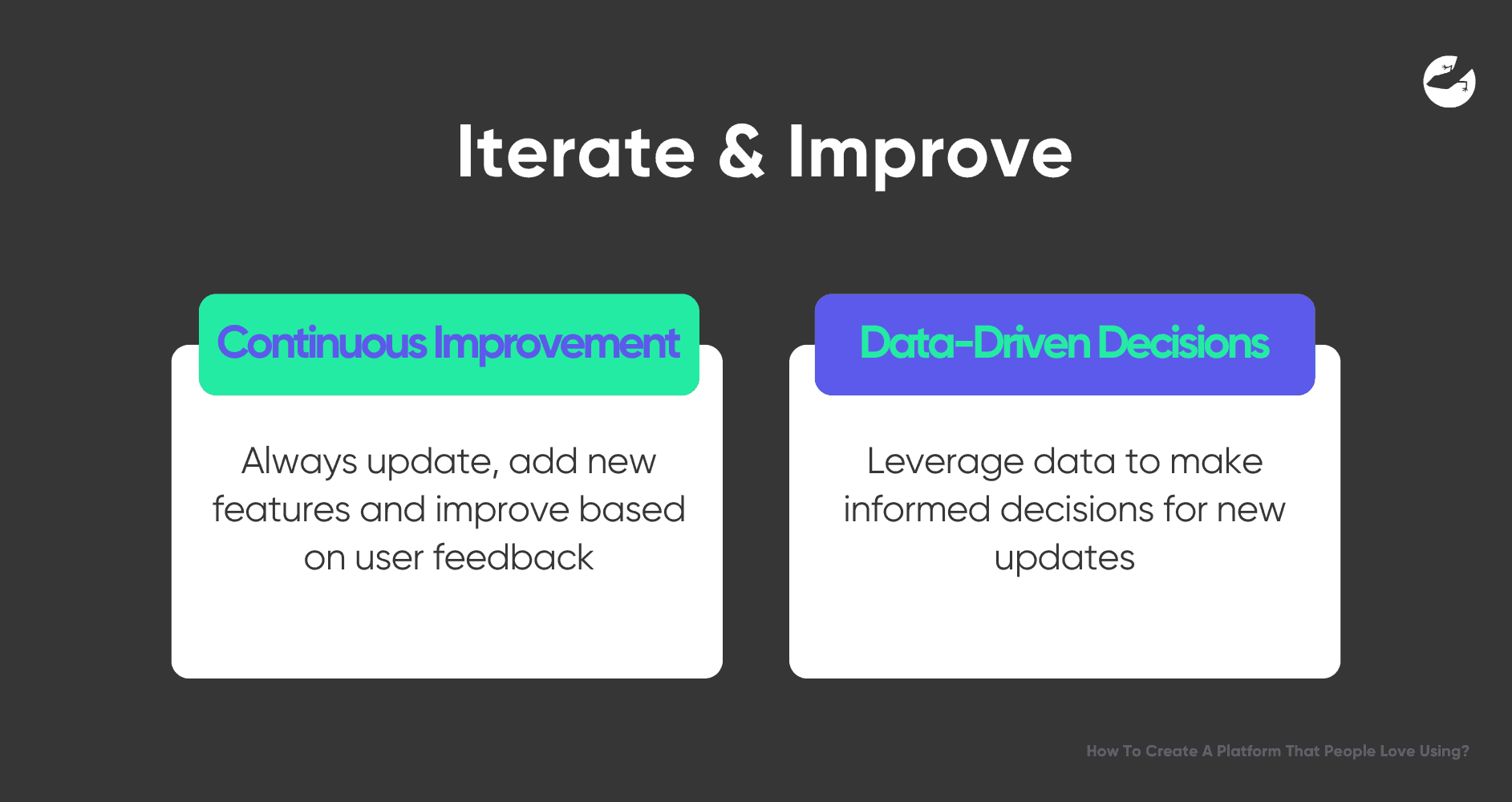
Continuous Improvement: Even after launch, the work isn’t done. Regular updates, new features, and improvements based on user feedback are crucial to maintaining engagement. Data-Driven Decisions: Use analytics to understand user behavior and make informed decisions about updates and new features.
Want to find out how much it costs to build your dream app or web app?
What Makes a Platform Appealing to Users?
Several factors contribute to the appeal of a platform or app, turning users into loyal advocates:
Intuitive Design:
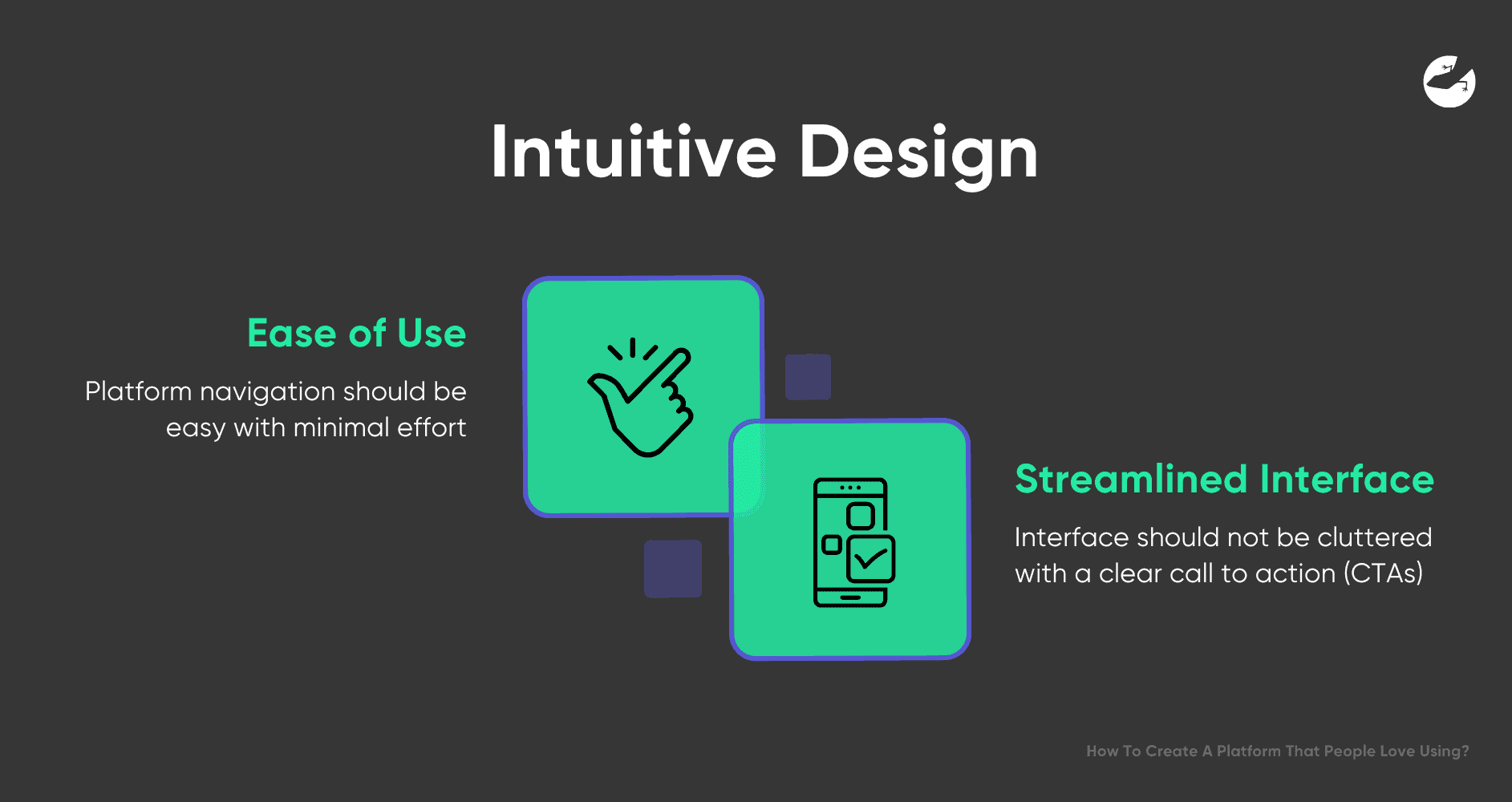
Ease of Use: Users should be able to navigate the platform with minimal effort. The design should be intuitive, reducing the learning curve.
Streamlined Interface: A clutter-free interface with clear calls to action (CTAs) ensures that users can accomplish their goals without frustration.
Personalization:
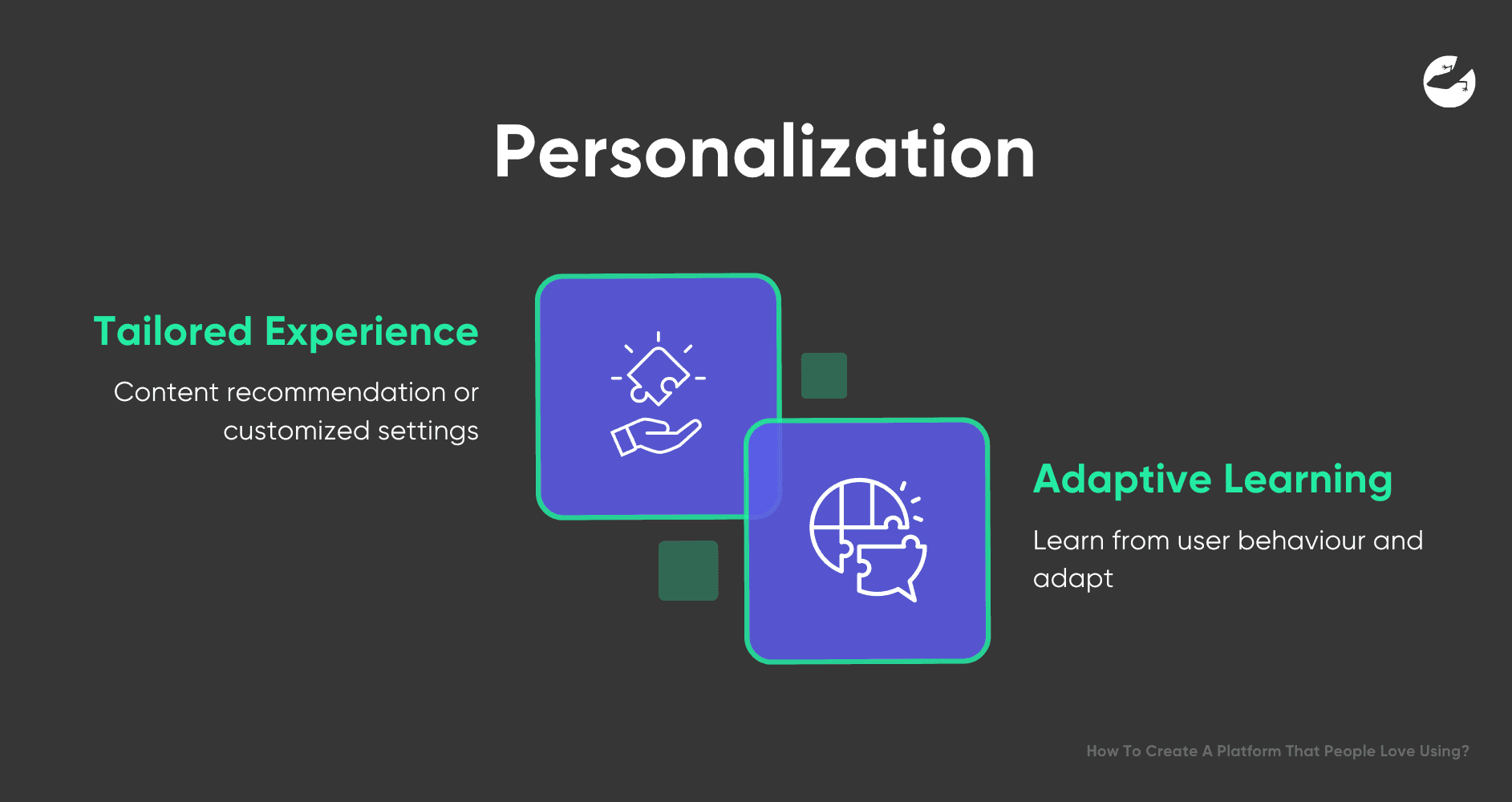
Tailored Experience: Personalization features, such as content recommendations or customizable settings, make users feel that the platform is uniquely theirs.
Adaptive Learning: Platforms that learn from user behavior and adapt accordingly (e.g., Netflix's recommendation engine) enhance user satisfaction.
Engagement and Retention Features:
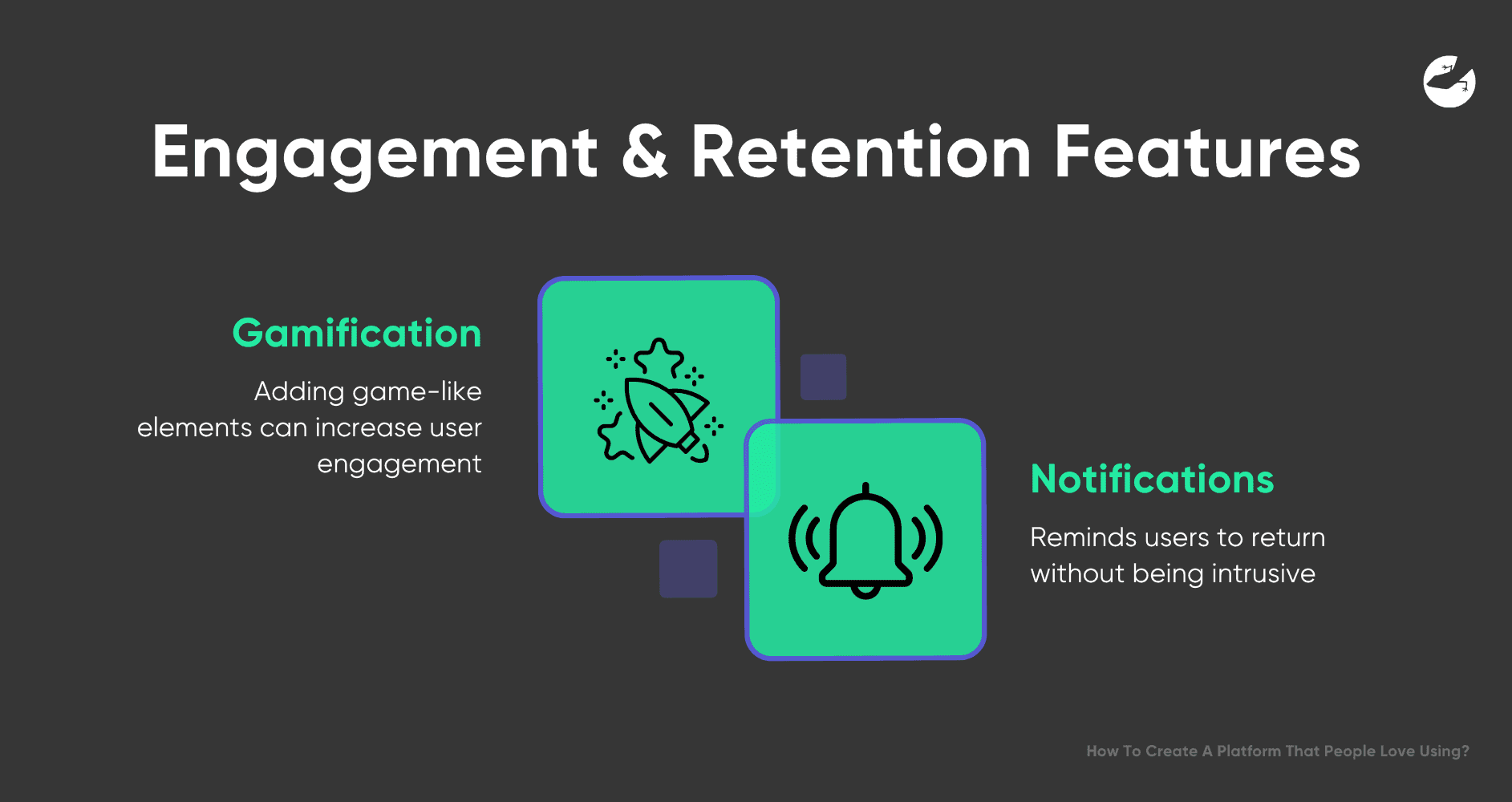
Gamification: Incorporating game-like elements, such as rewards, badges, and leaderboards, can increase user engagement.
Notifications: Timely and relevant notifications remind users to return to the platform without being intrusive.
Reliability and Performance:
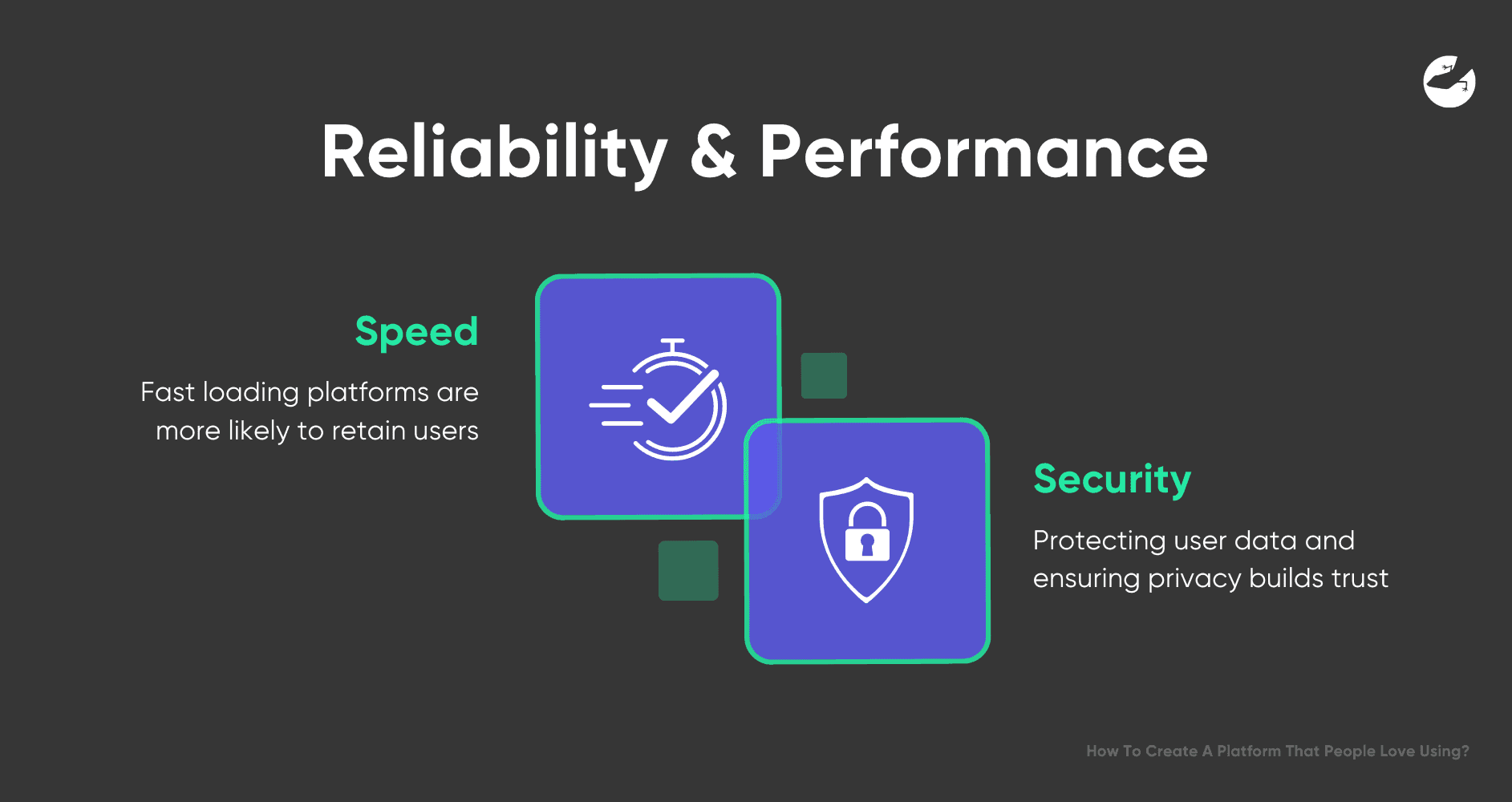
Speed: Fast loading times and smooth transitions are critical. Users are likely to abandon platforms that are slow or frequently crash.
Security: Protecting user data and ensuring privacy builds trust, which is crucial for long-term user retention.
Emotional Resonance:
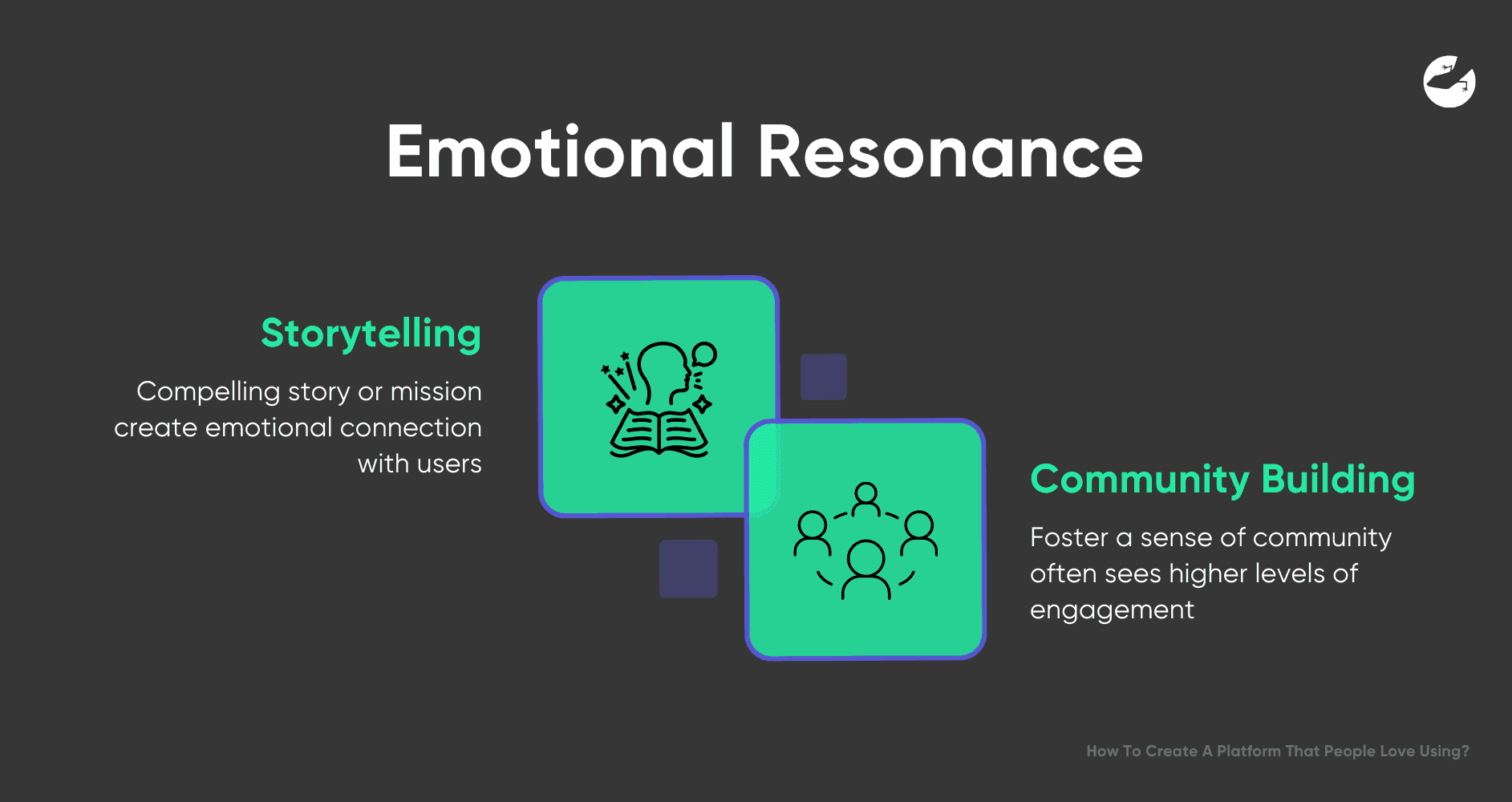
Storytelling: Platforms that tell a compelling story or have a strong mission can create an emotional connection with users.
Community Building: Platforms that foster a sense of community (e.g., Reddit) often see higher levels of engagement.
Case Studies
Instagram:
Evolution of Features: Instagram started as a simple photo-sharing app and evolved by continuously adding features that enhanced the user experience, such as Stories, IGTV, and Shopping.
User-Centric Updates: Instagram's updates have consistently focused on enhancing user interaction and engagement, making it one of the most loved social media platforms globally.
Duolingo:
Gamification for Engagement: Duolingo uses gamification to make language learning fun and addictive. Features like streaks, levels, and leaderboards keep users motivated.
Personalized Learning: The app adapts to the user’s learning style and pace, providing a personalized experience that keeps users coming back.
Slack:
Seamless Integration: Slack’s ability to integrate with various tools and platforms makes it indispensable for teams. Its intuitive design and ease of use contribute to its widespread adoption.
User-Driven Improvements: Slack’s updates are often driven by user feedback, ensuring that the platform evolves in a way that aligns with users' needs.
The Role of Lizard Global In Turning Your Ideas Into Tangible Solutions
A software development company plays a pivotal role in turning an app or platform concept into a product that users love. Here’s how:
Expertise in Technology and Design:
- Technical Proficiency: Software development companies bring technical expertise in the latest programming languages, frameworks, and tools necessary to build a robust platform.
- UX/UI Design: These companies often have dedicated UX/UI teams that focus on creating user-friendly and aesthetically pleasing designs.
Agile Development Process:
- Iterative Development: The use of agile methodologies allows for continuous feedback and iterations, ensuring that the platform evolves with user needs.
- MVP Development: Developing a Minimum Viable Product (MVP) allows for early user feedback, which is critical for refining the platform.
Quality Assurance and Testing:
- Rigorous Testing: Quality assurance teams conduct thorough testing to ensure the platform is bug-free and performs well under various conditions.
- User Acceptance Testing (UAT): Involving real users in the testing phase helps identify any usability issues before launch.

Post-Launch Support and Maintenance:
- Continuous Support: A reliable software development company provides ongoing support to address any issues that arise post-launch.
- Updates and Improvements: They also handle updates, ensuring the platform remains current with technological advancements and user expectations.
Scalability and Future-Proofing:
- Scalable Architecture: A good software development company designs the platform with scalability in mind, allowing it to grow as user demand increases.
- Future-Proofing: They also ensure the platform is built on technology that can easily adapt to future trends and requirements.
Join 2000+ subscribers
Stay in the loop with everything you need to know

How To Create A Platform That People Love Using
Creating a platform or app that users love requires a blend of intuitive design, emotional resonance, and continuous improvement. This blog explores the essential steps to build an app that stands out, the key factors that make it appealing, and how partnering with a software development company can turn your vision into a successful, user-loved product. Discover the secrets to crafting digital experiences that not only meet user needs but also exceed their expectations.
Creating a platform or app that people not only use but love is a challenging yet rewarding endeavor. As users are overloaded with countless apps and platforms competing for their attention, standing out requires more than just functionality—it requires an emotional connection with users, intuitive design, and a seamless user experience.
This blog delves into what makes a platform loved by its users, how to build one, the key elements of user appeal, and the role of a software development company in turning a concept into a captivating digital experience.
What is a Platform That People Love?

A platform or app that people love isn't just a tool—it's an experience. It’s something users turn to regularly, not because they have to, but because they want to. These are platforms and apps that users rave about, recommend to others, and remain loyal to over time. They are characterized by:
- User-Centric Design: Every aspect of the platform is designed with the user in mind, from ease of navigation to aesthetic appeal.
- Emotional Connection: The app or platform resonates with users on a personal level, making them feel understood and valued.
- High Usability: It’s intuitive, with a seamless flow that makes tasks easy and enjoyable.
- Reliability: Users can trust that the platform will perform consistently without glitches or downtime.
- Delightful Surprises: Small, unexpected features that enhance the user experience and bring joy.
How is it Done?
Creating a platform or app that users love involves a combination of strategic planning, user research, and iterative development. Here’s a step-by-step guide:
Understand Your Audience:

User Research: Begin by conducting thorough research to understand your target audience. What are their needs, pain points, and preferences? Surveys, interviews, and user personas can provide valuable insights.
Market Analysis: Analyze existing platforms and apps that cater to similar audiences. Identify what they do well and where they fall short.

Define the Core Value Proposition:
Unique Selling Point (USP): Determine what sets your platform or app apart. What unique value does it offer that others don’t?
Problem-Solution Fit: Ensure your app or platform solves a specific problem for your users in a way that is better than the alternatives.
Design for the User Experience (UX):

User-Centric Design: Design with the user in mind. Prioritize ease of use, intuitive navigation, and accessibility.
Prototype and Test: Create wireframes and prototypes to test your design with real users. Iterate based on feedback to refine the user experience.
Focus on Aesthetics (UI):

Visual Appeal: A visually appealing design can make a significant difference in user engagement. Consider typography, color schemes, and overall aesthetic coherence.
Consistent Branding: Ensure that the design aligns with your brand identity, creating a cohesive experience across all touchpoints.
Develop with Agility:

Agile Development: Use agile methodologies to develop the platform or app in increments. This allows for continuous feedback and improvements.
Quality Assurance: Rigorous testing is essential to ensure the platform is bug-free and performs well under various conditions.
Build an Engaged Community:

Social Features: Incorporate social features that allow users to connect with each other, share content, or compete in a fun way.
User Support and Feedback: Offer excellent customer support and actively seek feedback. Show users that their opinions matter by implementing changes based on their suggestions.
Iterate and Improve:

Continuous Improvement: Even after launch, the work isn’t done. Regular updates, new features, and improvements based on user feedback are crucial to maintaining engagement. Data-Driven Decisions: Use analytics to understand user behavior and make informed decisions about updates and new features.
Want to find out how much it costs to build your dream app or web app?
What Makes a Platform Appealing to Users?
Several factors contribute to the appeal of a platform or app, turning users into loyal advocates:
Intuitive Design:

Ease of Use: Users should be able to navigate the platform with minimal effort. The design should be intuitive, reducing the learning curve.
Streamlined Interface: A clutter-free interface with clear calls to action (CTAs) ensures that users can accomplish their goals without frustration.
Personalization:

Tailored Experience: Personalization features, such as content recommendations or customizable settings, make users feel that the platform is uniquely theirs.
Adaptive Learning: Platforms that learn from user behavior and adapt accordingly (e.g., Netflix's recommendation engine) enhance user satisfaction.
Engagement and Retention Features:

Gamification: Incorporating game-like elements, such as rewards, badges, and leaderboards, can increase user engagement.
Notifications: Timely and relevant notifications remind users to return to the platform without being intrusive.
Reliability and Performance:

Speed: Fast loading times and smooth transitions are critical. Users are likely to abandon platforms that are slow or frequently crash.
Security: Protecting user data and ensuring privacy builds trust, which is crucial for long-term user retention.
Emotional Resonance:

Storytelling: Platforms that tell a compelling story or have a strong mission can create an emotional connection with users.
Community Building: Platforms that foster a sense of community (e.g., Reddit) often see higher levels of engagement.
Case Studies
Instagram:
Evolution of Features: Instagram started as a simple photo-sharing app and evolved by continuously adding features that enhanced the user experience, such as Stories, IGTV, and Shopping.
User-Centric Updates: Instagram's updates have consistently focused on enhancing user interaction and engagement, making it one of the most loved social media platforms globally.
Duolingo:
Gamification for Engagement: Duolingo uses gamification to make language learning fun and addictive. Features like streaks, levels, and leaderboards keep users motivated.
Personalized Learning: The app adapts to the user’s learning style and pace, providing a personalized experience that keeps users coming back.
Slack:
Seamless Integration: Slack’s ability to integrate with various tools and platforms makes it indispensable for teams. Its intuitive design and ease of use contribute to its widespread adoption.
User-Driven Improvements: Slack’s updates are often driven by user feedback, ensuring that the platform evolves in a way that aligns with users' needs.
The Role of Lizard Global In Turning Your Ideas Into Tangible Solutions
A software development company plays a pivotal role in turning an app or platform concept into a product that users love. Here’s how:
Expertise in Technology and Design:
- Technical Proficiency: Software development companies bring technical expertise in the latest programming languages, frameworks, and tools necessary to build a robust platform.
- UX/UI Design: These companies often have dedicated UX/UI teams that focus on creating user-friendly and aesthetically pleasing designs.
Agile Development Process:
- Iterative Development: The use of agile methodologies allows for continuous feedback and iterations, ensuring that the platform evolves with user needs.
- MVP Development: Developing a Minimum Viable Product (MVP) allows for early user feedback, which is critical for refining the platform.
Quality Assurance and Testing:
- Rigorous Testing: Quality assurance teams conduct thorough testing to ensure the platform is bug-free and performs well under various conditions.
- User Acceptance Testing (UAT): Involving real users in the testing phase helps identify any usability issues before launch.

Post-Launch Support and Maintenance:
- Continuous Support: A reliable software development company provides ongoing support to address any issues that arise post-launch.
- Updates and Improvements: They also handle updates, ensuring the platform remains current with technological advancements and user expectations.
Scalability and Future-Proofing:
- Scalable Architecture: A good software development company designs the platform with scalability in mind, allowing it to grow as user demand increases.
- Future-Proofing: They also ensure the platform is built on technology that can easily adapt to future trends and requirements.
Join 2000+ subscribers
Stay in the loop with everything you need to know
FAQs

How do I ensure my platform stands out in a saturated market?
What are the most common mistakes to avoid when creating a platform?
How can I measure the success of my platform or app?
What role does user feedback play in app development?
How do I choose the right software development company for my project?
similar reads


